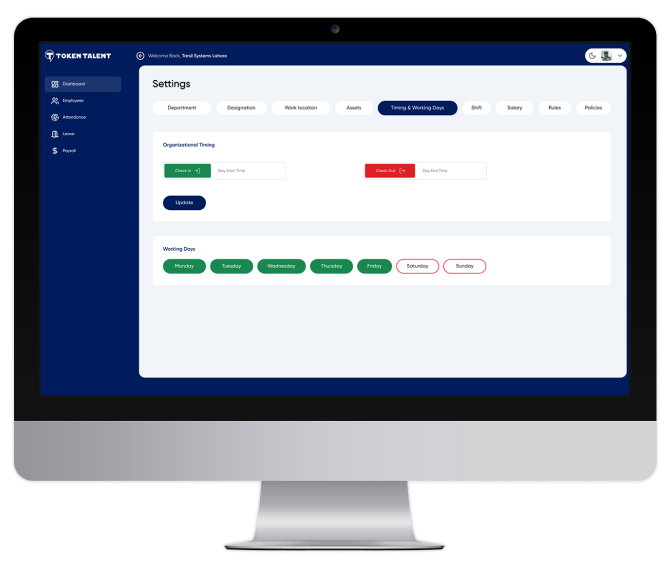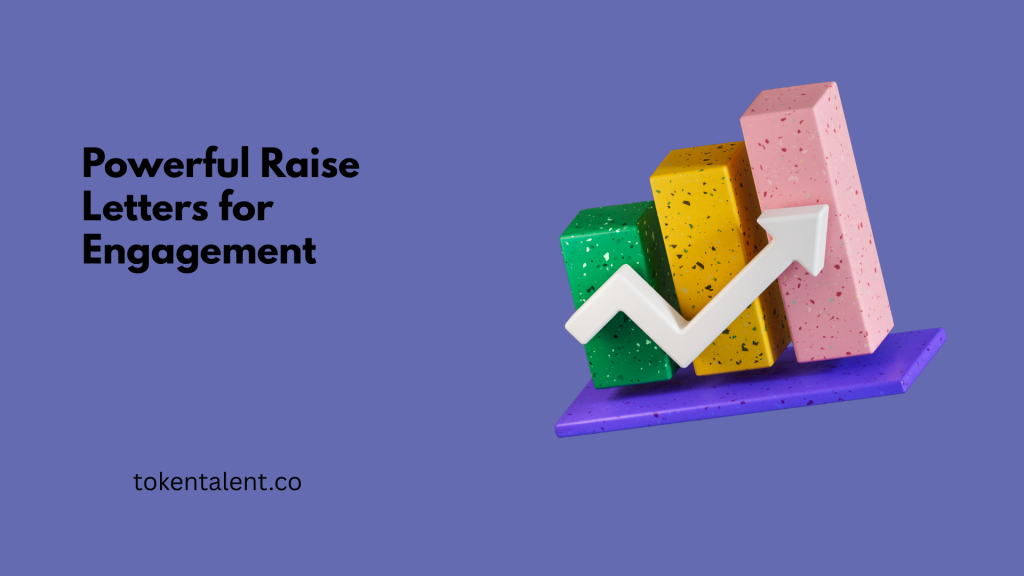Key Takeaways
- Use salary increase letters as a tool for motivation, employee engagement, and retention, boosting morale and reinforcing an employee’s value to the company.
- Always specify the current salary, raise amount, new salary, effective date, and any additional benefits.
- Save time and ensure professionalism by using customizable HR templates from Token Talent, the leading HR software for performance management and payroll automation.
Rewarding your employees’ hard work and dedication with a salary increase is key to maintaining high levels of motivation and job satisfaction. However, a salary increase is more than just a pay bump—it affirms their value and contributions to the company.
In this guide, we’ll walk you step-by-step through how to write a salary increase letter that’s clear, professional, and motivating. We’ve included two ready-to-use templates and five real-world examples for different scenarios. Whether you manage HR in a small business or a large enterprise, these tips—powered by Token Talent’s employee management tools—will help you communicate raises effectively.
Best Practices for Writing a Salary Increase Letter to an Employee
A salary increase letter is a formal written communication from an employer to an employee about a change in their compensation, specifically an increase in salary. It should clearly state the raise amount, effective date, and new salary structure.
When drafting your letter, keep these HR best practices in mind:
1. Know What to Include
Before writing, gather all the necessary details:
- Employee’s previous salary
- Amount or percentage of the raise
- New salary figure
- Effective date
- Any additional benefits (bonuses, allowances, perks)
With Token Talent’s HR and payroll module, you can easily track salary history, generate pay raise letters, and ensure all figures align with company policies.
2. Create an Outline
A professional salary increase letter typically includes:
- Addressing the employee
- Introduction & appreciation
- Details of the raise
- Reason for the raise
- Closing remarks & next steps
3. Use a Personal but Professional Salutation
Address the employee by name to make the letter personal and respectful.
4. Focus on the Introduction Paragraph
Express genuine appreciation for their contributions:
“We greatly value your dedication and contribution to our team and want to express our appreciation.”
5. Clearly State the Details
Include the current salary, raise percentage/amount, new salary, and effective date.
Also, acknowledge their achievements:
“This raise reflects your exceptional job performance and contribution to our latest project, which increased sales by 20%.”
6. End with a Motivational Closing
Reinforce your appreciation and encourage their continued excellence:
“We look forward to your continued dedication and exceptional work.”
Common Mistakes to Avoid
When drafting a salary increase letter, avoid:
- Lack of justification – Be clear about why the raise is being given.
- Vague details – Specify the raise amount and effective date.
- Ignoring company policy – Ensure alignment with HR guidelines.
- Overlooking contributions – Highlight specific achievements.
- Not setting future expectations – Clarify next goals or responsibilities.
- Using an overly casual tone – Maintain professionalism.
- Skipping gratitude – Always thank the employee.
- No review process – Have HR and management approve the letter.
- Missing engagement opportunities – Mention career growth.
- Not including contact info – State who to reach for questions.
With Token Talent’s performance management software, HR teams can track employee achievements, align raises with review cycles, and automatically generate compliant salary letters.
Salary Increase Letter Templates
Template 1: Formal Tone
vbnetCopyEditDear [Employee's First Name],
We are pleased to acknowledge your significant contributions to [Company Name], especially your role in [achievement/initiative].
Effective [date], your new annual salary will be $[amount], reflecting an increase of [percentage or amount] from your current salary.
We value your dedication and look forward to your continued success.
Best regards,
[Your Name]
[Your Position]
Template 2: Informal Tone
vbnetCopyEditHey [Employee's First Name],
You’ve been doing an amazing job, especially when you [achievement/initiative].
Starting [date], your new annual salary will be $[amount], which is an increase of [percentage or amount].
We really appreciate your hard work—keep it up!
Cheers,
[Your Name]
[Your Position]
5 Salary Increase Letter Examples for Different Scenarios
1. When an Employee Requests a Raise
Acknowledges their request and provides justification.
2. After a Promotion
Recognizes their new role and added responsibilities.
3. Following a Performance Review
Rewards exceptional performance metrics.
4. After Gaining a New Certification
Acknowledges skill upgrades that benefit the company.
5. Company-Wide Cost of Living Raise
Applies uniformly to all employees.
How Token Talent Can Help
Token Talent is an all-in-one HR, payroll, and employee engagement platform that:
- Tracks employee performance and achievements.
- Aligns salary increases with performance reviews.
- Generates professional, branded raise letters instantly.
- Ensures compliance with company salary policies.

If your HR team spends too much time manually preparing pay raise letters, Token Talent’s automation tools will save hours, reduce errors, and boost employee engagement.
Final Thought:
A well-written salary increase letter isn’t just a formality—it’s a chance to motivate, retain, and inspire your employees. Using tools like Token Talent ensures your salary communications are timely, professional, and morale-boosting.




